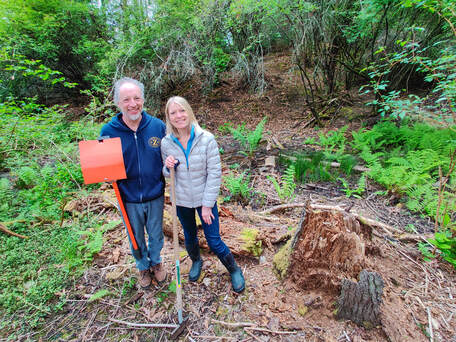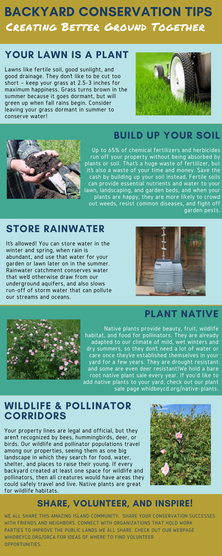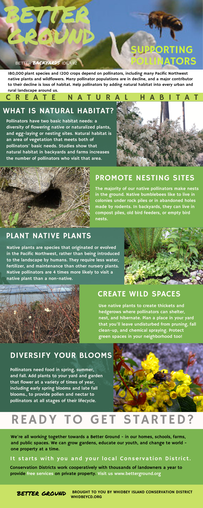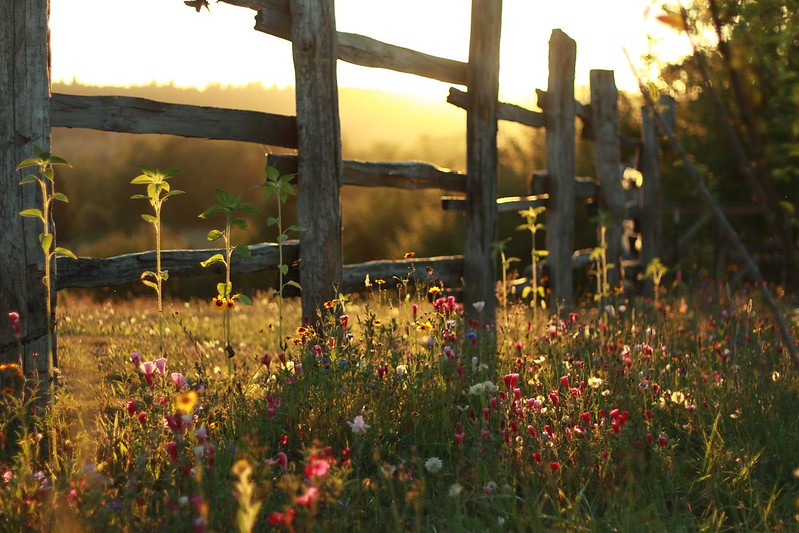Habitat Stewardship
|
Picture your property. Each plant, structure, pathway and drain. Bring it to life in your mind’s eye. Your yard is your very own mini ecosystem. That ecosystem includes you and your family, but it's much bigger than that. You share it with everything from tiny soil micro-organisms all the way up to squirrels and deer. Rain, snow, and wind affect it, and can even change it by knocking down a tree or flooding a low area of lawn. The location of your gutter drains, your impervious concrete surfaces (like driveways), and the fertility of the soil on which your grass grows all influence your ecosystem.
Is your ecosystem healthy? Are all the components of it working together properly? And if not, how can you make improvements? Check out our resource hub for ideas, and request assistance with the link below for help with planting plans and stewardship planning! Native Plants Promote Better GroundNative plants are species that originated or evolved in the soils, topography, and climate of western Washington, rather than being introduced to the landscape by humans. Native plants have many advantages, including better immune systems to fend off pests and disease, and adaptability to our wet winters and dry summers. Native plants need less water than non-natives, and are more commonly used as food and shelter by wildlife. Using native plants on your property is a best management practice for resource conservation. They can improve our water quality, reduce soil and wind erosion, clean the air, reduce energy costs, attract and support local wildlife, and beautify property. We host an annual Bare Root Native Plant Sale each winter.
It Starts with Soil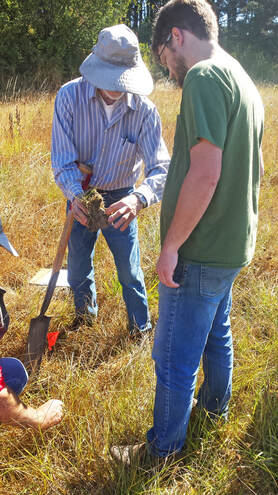
Soil is integral in many conservation practices. Soil health effects lawns, gardens, crops and forests; drainage and other water issues; and the ability of our ecosystems to function properly. There are many tools and resources available provided through the USDA, WSU Extension, and others to begin the journey of learning about your site. To begin, we recommend Healthy Soil for Life.
Create a Soil Report utilizing the USDA's Web Soil Survey, learn about soil fertility through WSU Extension publications, and get your soil tested with guides our Resource Hub. |
"We were in awe of the land’s beauty and felt we personally gained so much just by being surrounded by nature. Once we realized the adverse impacts of noxious weeds and non-native plants on the forest’s health, we felt a responsibility to help however we could." |
Greenspaces Video |
Smart Watering Tips Video |
|
|
|
